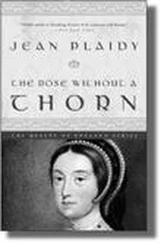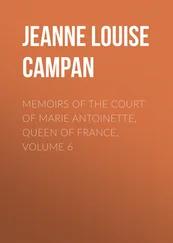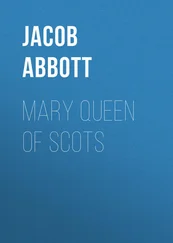Henry Bell - Life of Mary Queen of Scots, Volume 2 (of 2)
Здесь есть возможность читать онлайн «Henry Bell - Life of Mary Queen of Scots, Volume 2 (of 2)» — ознакомительный отрывок электронной книги совершенно бесплатно, а после прочтения отрывка купить полную версию. В некоторых случаях можно слушать аудио, скачать через торрент в формате fb2 и присутствует краткое содержание. Жанр: foreign_antique, foreign_prose, на английском языке. Описание произведения, (предисловие) а так же отзывы посетителей доступны на портале библиотеки ЛибКат.
- Название:Life of Mary Queen of Scots, Volume 2 (of 2)
- Автор:
- Жанр:
- Год:неизвестен
- ISBN:нет данных
- Рейтинг книги:5 / 5. Голосов: 1
-
Избранное:Добавить в избранное
- Отзывы:
-
Ваша оценка:
- 100
- 1
- 2
- 3
- 4
- 5
Life of Mary Queen of Scots, Volume 2 (of 2): краткое содержание, описание и аннотация
Предлагаем к чтению аннотацию, описание, краткое содержание или предисловие (зависит от того, что написал сам автор книги «Life of Mary Queen of Scots, Volume 2 (of 2)»). Если вы не нашли необходимую информацию о книге — напишите в комментариях, мы постараемся отыскать её.
Life of Mary Queen of Scots, Volume 2 (of 2) — читать онлайн ознакомительный отрывок
Ниже представлен текст книги, разбитый по страницам. Система сохранения места последней прочитанной страницы, позволяет с удобством читать онлайн бесплатно книгу «Life of Mary Queen of Scots, Volume 2 (of 2)», без необходимости каждый раз заново искать на чём Вы остановились. Поставьте закладку, и сможете в любой момент перейти на страницу, на которой закончили чтение.
Интервал:
Закладка:
In the meantime, Darnley, who, as we have seen, left Stirling for Glasgow on the 24th of December, had been taken dangerously ill. Historians differ a good deal concerning the nature of his illness, which is by some confidently asserted to have been occasioned by poison, administered to him either before he left Stirling, or on the road, by servants, who had been bribed by Bothwell; and by others is as confidently affirmed to have been the small-pox, a complaint then prevalent in Glasgow. On the whole, the latter opinion seems to be the best supported, as it is confirmed by the authority both of the English ambassador, and of the cotemporary historians, Lesley and Blackwood. Knox, Buchanan, Melville, Crawford, Birrell and others, mention, on the other hand, that the belief was prevalent, that the King’s sickness was the effect of poison. But as the only evidence offered in support of this popular rumour is, that “blisters broke out of a bluish colour over every part of his body,” and as this may have been the symptoms of small-pox as well as of poison, the story does not seem well authenticated. Besides, in the letter which Mary is alleged to have written a week or two afterwards to Bothwell from Glasgow, she is made to say that Darnley told her he was ill of the small-pox. Whether the letter be a forgery or not, this paragraph would not have been introduced, unless it had contained what was then known to be the fact.
Be this matter as it may, it is of more importance to correct a mistake into which Robertson has not unwillingly fallen, regarding the neglect and indifference with which he maintains Mary treated her husband, during the earlier part of his sickness. We learn, in the first place, by Bedford’s letter to Cecil, already mentioned, that as soon as Mary heard of Darnley’s illness, she sent her own physician to attend him. 20 20 Chalmers, vol. i. p. 199; and vol. ii. p. 176.
And, in the second place, it appears, that it was some time before Darnley’s complaint assumed a serious complexion; but that, whenever Mary understood he was considered in danger, she immediately set out to visit him. “The Queen,” says Crawford, “was no sooner informed of his danger, than she hasted after him.” – “As soon as the rumour of his sickness gained strength,” says Turner (or Barnestaple), “the Queen flew to him, thinking more of the person to whom she flew, than of the danger which she herself incurred.” – “Being advertised,” observes Lesley, “that Darnley was repentant and sorrowful, she without delay, thereby to renew, quicken, and refresh his spirits, and to comfort his heart to the amendment and repairing of his health, lately by sickness sore impaired, hasted with such speed as she conveniently might, to see and visit him at Glasgow.” Thus, Robertson’s insinuation falls innocuous to the ground.
It was on the 13th of January 1567 that Mary returned from Stirling to Edinburgh, having spent the intermediate time, from the 27th of December, in paying visits to Sir William Murray, the Comptroller of her household, at Tullibardin, and to Lord Drummond at Drummond Castle. As is somewhere remarked, “every moment now begins to be critical, and every minuteness and specific caution becomes necessary for ascertaining the truth, and guarding against slander.” The probability is, that Bothwell was not with Mary either at Tullibardin or Drummond Castle. Meetings of her Privy Council were held by her on the 2d and 10th of January; and it appears by the Register, that Bothwell was not present at any of them. Chalmers is of opinion, that, during the early part of January he must have been at Dunbar, making his preparations, and arranging a meeting with Morton. When the Queen arrived at Edinburgh on the 13th, she lodged her son, whom she brought with her, in Holyroodhouse. A few days afterwards, she set out for Glasgow to see her husband. Her calumniators, on the supposition that she had previously quarrelled with Darnley, affect to discover something very forced and unnatural in this visit. But Mary had never quarrelled with Darnley . He had quarrelled with her ministers, and had been enraged at the failure of his own schemes of boyish ambition, but against his wife he had himself frequently declared he had no cause of complaint. Mary, on her part, had always shown herself more grieved by Darnley’s waywardness than angry at it. Only a day or two before going to Glasgow, she said solemnly, in a letter she wrote to her ambassador at Paris, – “As for the King, our husband, God knows always our part towards him.” – “God willing, our doings shall be always such as none shall have occasion to be offended with them, or to report of us any way but honourably.” 21 21 Keith, Preface p. viii.
So far, therefore, from there being any thing uncommon or forced in her journey to Glasgow, nothing could be more natural, or more likely to have taken place. “Darnley’s danger,” observes Dr Gilbert Stuart, with the simple eloquence of truth, “awakened all the gentleness of her nature, and she forgot the wrongs she had endured. Time had abated the vivacity of her resentment, and after its paroxysm was past, she was more disposed to weep over her afflictions, than to indulge herself in revenge. The softness of grief prepared her for a returning tenderness. His distresses effected it. Her memory shut itself to his errors and imperfections, and was only open to his better qualities and accomplishments. He himself, affected with the near prospect of death, thought, with sorrow, of the injuries he had committed against her. The news of his repentance was sent to her. She recollected the ardour of that affection he had lighted up in her bosom, and the happiness with which she had surrendered herself to him in the bloom and ripeness of her beauty. Her infant son, the pledge of their love, being continually in her sight, inspirited her sensibilities. The plan of lenity which she had previously adopted with regard to him; her design to excite even the approbation of her enemies by the propriety of her conduct; the advices of Elizabeth by the Earl of Bedford to entertain him with respect; the apprehension lest the royal dignity might suffer any diminution by the universal distaste with which he was beheld by her subjects, and her certainty and knowledge of the angry passions which her chief counsellors had fostered against him – all concurred to divest her heart of every sentiment of bitterness, and to melt it down in sympathy and sorrow. Yielding to tender and anxious emotions, she left her capital and her palace, in the severest season of the year, to wait upon him. Her assiduities and kindnesses communicated to him the most flattering solacement; and while she lingered about his person with a fond solicitude, and a delicate attention, he felt that the sickness of his mind and the virulence of his disease were diminished.”
On arriving at Glasgow, Mary found her husband convalescent, though weak and much reduced. She lodged in the same house with him; but his disease being considered infectious, they had separate apartments. Finding that his recent approach to the very brink of the grave had exercised a salutary influence over his mind and dispositions, and hoping to regain his entire confidence, by carefully and affectionately nursing him during his recovery, she gladly acceded to the proposal made by Darnley, that she should take him back with her to Edinburgh or its vicinity. She suggested that he should reside at Craigmillar Castle, as the situation was open and salubrious; but for some reason or other, which does not appear, he objected to Craigmillar, and the Queen therefore wrote to Secretary Maitland to procure convenient accommodation for her husband, in the town of Edinburgh. 22 22 Anderson, vol. iv. p. 165. – Goodall, vol. ii. p. 76.
Darnley disliked the Lords of the Privy Council too much to think of living at Holyrood; and besides, it was the opinion of the physicians, that the young Prince, even though he should not be brought into his father’s presence, might catch the infection from the servants who would be about the persons of both. But when Mary wrote to Maitland, she little knew that she was addressing an accomplice of her husband’s future murderer. The Secretary showed her letter to Bothwell, and they mutually determined on recommending to Darnley the house of the Kirk-of-Field, which stood on an airy and healthy situation to the south of the town, and which, therefore, appeared well suited for an invalid, although they preferred it because it stood by itself, in a comparatively solitary part of the town. 23 23 Goodall, vol. ii. p. 76. – et seq.
On Monday, January 27th, Mary and Darnley left Glasgow. They appear to have travelled in a wheeled carriage, and came by slow and easy stages to Edinburgh. They slept on Monday night at Callander. They came on Tuesday to Linlithgow, where they remained over Wednesday, and arrived in Edinburgh on Thursday.
Интервал:
Закладка:
Похожие книги на «Life of Mary Queen of Scots, Volume 2 (of 2)»
Представляем Вашему вниманию похожие книги на «Life of Mary Queen of Scots, Volume 2 (of 2)» списком для выбора. Мы отобрали схожую по названию и смыслу литературу в надежде предоставить читателям больше вариантов отыскать новые, интересные, ещё непрочитанные произведения.
Обсуждение, отзывы о книге «Life of Mary Queen of Scots, Volume 2 (of 2)» и просто собственные мнения читателей. Оставьте ваши комментарии, напишите, что Вы думаете о произведении, его смысле или главных героях. Укажите что конкретно понравилось, а что нет, и почему Вы так считаете.












